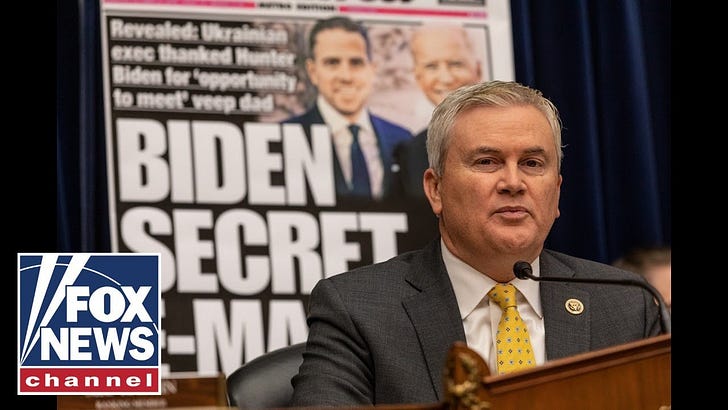MAKING SENSE OF THE PAK-IRAN STAND-OFF

Why, when its list of allies is already so thin, did Iran choose to venture down this seemingly ill-conceived path?
Published January 28, 2024
In what was widely described as a surprise attack, Iran fired missiles at a compound in Sabz-Koh, a hamlet about 45 kilometres from the Pakistan-Iran border, on the night of January 16. After the declared attack, Iran’s foreign minister, Hossein Amir-Abdollahian, stated that Iran had targeted, “The so-called Jaish al-Adl group, which is an Iranian terrorist group.”
He further added while at the sidelines of the World Economic Forum in Davos, Switzerland, “On Pakistan, none of the nationals of the friendly and brotherly country of Pakistan were targeted by Iranian missiles and drones.”
Just hours before the attack, Amir-Abdollahian had had a bilateral meeting with Pakistan’s caretaker prime minister, Anwaarul Haq Kakar. Earlier, on January 16, Pakistan Navy had held a joint day-long exercise with Iran’s navy, which a Tehran Times report described as “demonstrating their commitment to enhancing cooperation and strengthening relations.”
Amir-Abdollahian also made it clear that the attack on “Pakistan’s soil” was in response to the Jaish al-Adl group’s recent attack on the Iranian city of Rask, in the southeastern province of Sistan-Baluchestan, stating, “The group has taken shelter in some parts of Pakistan’s Balochistan province. We’ve talked with Pakistani officials several times on this matter.”
Iran’s post-attack position was that, while it respected the sovereignty and territorial integrity of Pakistan, it would not “allow [Iran’s] national security to be compromised or played with.”
As Pakistan and Iran attempt to patch up their relationship in the aftermath of Iran’s unprovoked missile attack on Pakistani soil on January 16, one question remains unanswered: why, when its list of allies is already so thin, did Iran choose to venture down this seemingly ill-conceived path?
The logic did not wash with Pakistan. Pakistan downgraded its diplomatic relations with Iran, summoned Iran’s chargé d’affaires (since Iran’s ambassador was in Iran), issued a démarche and told the Pakistani ambassador to Iran, who was in Islamabad on official business, to not return to his post.
After this non-kinetic escalatory response, however, Pakistan decided to respond with a measured kinetic action, the reasons for which we shall discuss later. On January 18, Pakistan used drones and stand-off munitions to strike a compound in the village of Haq Abad in Saravan district in Iran’s Sistan-Baluchestan province.

Underlying factors in Balochistan on Pakistan’s side and Sistan-Baluchestan on Iran’s side will continue to sour relations unless the two sides cooperate | AFP
Pakistan’s official statement said that the action was carried out on credible intelligence of an impending terrorist attack inside Pakistan by Baloch saramchar [fighters]. Iran also conceded that the 10 people killed in the three strikes were foreign nationals. To give Iran an off-ramp, Pakistan did not target any Iranian military facilities or missile launch sites.
While the international media made big of the exchange, since Iran had also struck targets in Syria and Iraq, the phone call between the two countries’ foreign ministers helped defuse tensions and the situation was de-escalated (more on that in a subsequent section).
Does this mean all is now well? Yes and no. ‘Yes’ because the signal to Iran is clear: if Pakistan’s territorial integrity is compromised, Islamabad will respond. Any escalation will then be the adversary’s option, who must understand the dynamics of escalation dominance.
‘No’ because the underlying factors in Balochistan on Pakistan’s side and Sistan-Baluchestan on Iran’s side would continue to sour relations unless the two sides cooperate and address them seriously. For that, one has to understand the ecosystem.
THE ECOSYSTEM OVERVIEW — IRAN’S CONCERNS
On December 15 last year, Jaish al-Adl (JaA), a reincarnation of the banned militant group Jundallah, in an early morning raid at a police station in Rask, killed 12 Iranian policemen and wounded eight.
Later the same day, Nasser Kanaani, Iran’s Foreign Ministry spokesperson, “strongly condemned the crime by separatist terrorists and mercenaries of foreign adversaries of Iran.” Kanaani also promised that “the Foreign Ministry and other relevant bodies in Iran will act in concert to go after the murderous terrorists and bring them to justice.”
While JaA has been attacking Iran’s security forces on and off since 2013, when it reassembled in its present incarnation from Jundallah, the Rask attack was far more intense than anything in the previous years. The other three intense attacks were in 2013 (14 Iranian soldiers killed in an ambush) and April 26, 2017, when 10 Iranian border guards were killed in the town of Mirjaveh. The worst attack came in February 2019, when a suicide bomber killed 27 Islamic Revolutionary Guards Corps (IRGC) personnel.
At the time of the 2017 attack, the Iranian state media quoted police officials as saying that “the Pakistani government bears the ultimate responsibility of [sic] the attack.”
Two weeks after the attack, Maj Gen Mohammad Bagheri, an IRGC commander who serves as Chief of Staff of Iran’s Armed Forces, threatened to strike inside Pakistan: “We expect Pakistani officials to control the borders, arrest the terrorists and shut down their bases… If the terrorist attacks continue, we will hit their safe havens and cells, wherever they are.”
Pakistan’s Ministry of Foreign Affairs (MoFA) summoned the Iranian ambassador over Bagheri’s ultimatum and noted that his comments went “against the spirit of brotherly relations.” Efforts were made at the diplomatic and military levels to defuse the tension and work out mechanisms for cooperation. When on October 16, 2018, JaA abducted 12 Iranian security personnel, including IRGC intelligence officers, Pakistan helped Iran to secure the release of at least five of them.
After the 2019 attack, IRGC Commander-in-Chief Mohammad Ali Jafari had issued Pakistan an ultimatum: “If Pakistan fails to punish them in the near future, Iran will do so based on international law and will retaliate against the terrorists.”
In the same statement, as reported by Al Jazeera, Jafari said Saudi Arabia and the United Arab Emirates are “conspiring” with the United States and the “Zionist regime” to foment attacks. “The patience that we have practised in the past towards Saudi Arabia and the UAE, who commit these actions, will change,” Jafari stated. Interestingly, Jafari’s comments came as Saudi Crown Prince Mohammad bin Salman landed in Pakistan on February 17 on a two-day official visit.

People gather near rubble in the aftermath of Pakistan’s strike on militant hideouts in an Iranian village near Saravan in Sistan-Baluchestan: Pakistan’s response was measured and targeted insurgents and not the Islamic Revolutionary Guards Corps launch pads | Reuters
REWINDING TO THE NOUGHTIES
Iran’s troubles in Sistan-Baluchestan are not new. The Sunni minority makes up about 10 percent of Iran’s population. While the majority of the Sunnis live in the Kurdish north, the Sunnis of Sistan-Baluchestan have traditionally faced persecution.
The area is underdeveloped and poor and religious freedom is restricted. For instance, while Christians and Zoroastrians have official prayer places in Tehran, the Sunni minority (about one million residents of Tehran) does not have a single official mosque in the city. Although they have several prayer places in the city, none is recognised as a mosque.
Tensions have always simmered in Sistan-Baluchestan, but the situation took a different turn in 2003 with the appearance on the scene of Jundallah, the precursor of JaA. Jundollah mounted a number of hit-and-run attacks on Iran’s security forces in the southeast, including in Zahedan.
The group’s young leader, Abdolmalek Rigi, became known as an elusive daredevil. As Alex Vatanka notes in his Iran and Pakistan: Security, Diplomacy and American Influence, Jundallah adopted radical Sunni slogans as part of its resistance to Shia Iran. Rigi himself had studied at a seminary and later at the Binori Town Mosque in Karachi. The noughties, with Al Qaeda, its various franchises across the Muslim world and the Taliban in Afghanistan and Pakistan’s borderlands, provided the radical Sunni habitat for Jundallah’s fight.
With Jundallah’s violent actions — resistance and Sunni radicalism — began the trouble between Pakistan and Iran. After the initial attacks, the IRGC decided to adopt a soft, two-pronged approach: reaching out to Sunni tribal elders and managing the border jointly with Pakistan. The first was also aimed at development initiatives. The second proved tougher, given clan linkages on both sides of the border and due to the activities of smugglers and other crime syndicates.
Vatanka notes that, while Iranian officials had begun to point fingers at Pakistan, “No one in Tehran could pinpoint the exact identity of the Pakistani backers of Jundallah, and Tehran never put forward concrete evidence to corroborate the charges levelled against Islamabad.”
Then came the assassination of Nur-Ali Shushtari, the deputy commander of the ground forces of IRGC. Shushtari had been given the task of dealing with Jundallah. On the morning of October 18, 2009, as he sat in a tent in Pishin, a town close to the border, meeting with local tribal leaders, a suicide bomber blew himself up, killing Shushtari, along with four other IRGC senior officers. The total toll was 41 dead.
As Vatanka narrates, IRGC Commander-in-Chief Jafari “issued a blanket indictment against the United States, Israel and Britain as the culprits.” He also said that, “Rigi took his orders not only from Pakistan but from [the] intelligence services of Britain and the US.” Later, Iran also threw Saudi Arabia and the UAE into the mix. Pakistan’s response was that it would help Iran in unearthing the people responsible.
After this attack, Iran “ratcheted up the pressure on Pakistan.” Iranian media also reported that Iran had shared evidence with Pakistan of the “links between Pakistani intelligence services and Jundallah.”
Pakistan refuted these allegations. It had its own concerns with Iran.
ECOSYSTEM — PAKISTAN’S CONCERNS
For all the outward rhetoric about brotherly relations, Pakistan has had many concerns with Iran since the revolution. Three stand out.
As part of ‘exporting the revolution’ with its Shia theocratic overtones, Iran has been reaching out overtly and covertly to Shia populations in Pakistan, Afghanistan and the greater Middle East. This, along with the rise of Sunni radicalism because of the Afghan wars, has introduced violent sectarianism in Pakistan. While Iran’s support for radical Shia groups goes back to the early ’80s, the IRGC and its Quds Force have added another element to it since the civil war in Syria: recruitment of Shia fighters from Pakistan and Afghanistan.
The rivalry in Afghanistan is another sore point, with Iran supporting the erstwhile Northern Alliance in that country. It is instructive that, after the American invasion of Afghanistan which ousted the Taliban, Pakistan was kept out of the Bonn process, while Iran was an essential part of the process, its delegates led by former foreign minister Kamal Kharazi.
James Dobbins, a former American ambassador and assistant secretary of state, notes, “In the immediate aftermath of 9/11, bilateral US-Iranian contacts produced the most significant cooperation since the 1979 revolution, as Iranian officials helped the US form a new Afghan government.”
Iran, Russia and India were the main backers of the Northern Alliance and Iran was in an excellent position to help with the Bonn Process and the formation of the new Afghan government. Later, as Dobbins states, Iran even offered to train the Afghan security forces. Tehran also tried to engage the US in stabilising Iraq, but the Bush administration spurned Tehran.
Iran’s close ties with India are another Pakistani concern. These ties have both broader implications for Pakistan-Iran relations and are also Balochistan-specific. Pakistan has repeatedly engaged Iran on the issue of Tehran’s support for Baloch sub-nationalism and about giving space to Indian intelligence agencies on its soil (especially through its consulate in Zahedan) to fund Baloch militant groups.
However, with the exception of one instance, unlike official Iranian statements, Pakistan has mostly discussed these issues with their Iranian counterparts behind closed doors. That one instance was in March 2016, during a visit to Pakistan by Iran President Hassan Rouhani.
Rouhani met the Pakistani leadership and also the then Chief of Army Staff, Gen Raheel Sharif. After he left for the airport to board the flight back to Tehran, former Lt Gen Asim Bajwa, who was then Director-General Inter-Services Public Relations (ISPR), tweeted that, during the meeting, Gen Sharif had told President Rouhani: “There is one concern that RAW [Indian external intelligence agency] is involved in Pakistan, especially in Balochistan, and sometimes it also uses the soil of our brother country Iran.”
This was an egregious miscalculation. As the late Sartaj Aziz, then adviser to the prime minister on foreign affairs, told me in a private meeting, the tweet took the civilian government by surprise. Aziz said, “We had to try and defuse the situation.” Rouhani, for his part, “rejected the claim that the issue of the Indian spy agency’s involvement in Pakistan was discussed during his meeting with the country’s leadership.”
The fact is that Pakistan had discussed the activities of India’s Research and Analysis Wing (RAW). That was inevitable. Earlier, on March 3, a Pakistani counter-intelligence team had apprehended Kulbhushan Jadhav, an Indian naval officer, from Mashkel in Pakistani Balochistan. Jadhav had a passport that identified him as Hussain Mubarek Patel. He confessed to running agents in Balochistan and planning and handling subversive activities.
Pakistan has given dossiers to Iran, including one that was handed over by Shah Mehmood Qureshi in his last official appointment as foreign minister. India’s activities in assassinating people on foreign soil are no more a secret, after two cases in Canada and the US. Last year in October, a court in Qatar sentenced eight former Indian naval officers to death, on charges of spying for Israel. After much hectic diplomatic activity between Qatar and India, these sentences have been reduced, but India has refused to divulge any further details.
Pakistan, on its part, has handed over two dossiers to Western capitals and the United Nations on India’s state-sponsored terrorism inside Pakistan. There have also been increasing numbers of assassinations of Kashmiris on Pakistan’s soil. The essential point about referencing India is to establish that Pakistan’s concern over India-Iran relations in the context of Balochistan and Afghanistan is fact-based and not a case of paranoia.
It is important at this point to note that January 16 was not the first time Iran attacked a target inside Pakistan. Iran has done that before too, firing mortars and mounting shallow raids. But this was the first time that it used missiles and, more importantly, declared the attack.

Iran argues that the missile attack was in response to Jaish al-Adl’s recent attack on the Iranian city of Rask in Sistan-Baluchestan | Jaish al-Adl
WHY THE LATEST DECLARATORY ATTACK
One question that continues to bother Pakistan is about Iran’s calculus in conducting the January 16 attack. As noted above, Iran has previously fired mortars in Pakistani territory and occasionally mounted shallow raids inside Pakistani territory. But this was the first time that it used short-range missiles and also the first time it chose to go on record about having done so, invoking its sovereign right to defend itself.
Nor does Iran’s logic become any less opaque going by Tehran’s statements. It claimed that it struck terrorist cells of JaA, which it says has havens in Pakistani Balochistan. Iran also mentioned, as has been its motif, that JaA is linked with Zionists, even though it is a US-designated terrorist organisation.
It later said that the strike was made preemptively. That doesn’t square with the statement about the attack in Rask, which happened last year. That JaA enjoys sanctuaries in Pakistan, with alleged help from state actors hostile to Iran, has also been, as noted, a motif with Iran.
So, what changed?
One can only speculate. One possibility is that the operation was undertaken by some elements within the IRGC, without necessarily running it up the food chain. The IRGC is a parallel force and is responsible for recruiting and managing Iranian proxies in West Asia and the Mena (Middle East and North Africa) region. The nature of its work means giving its commanders carte blanche.
Iran had earlier struck targets in Syria and Iraq, justifying the strikes as a national security imperative. In combination with the factors mentioned above, someone decided to throw Pakistan into the mix. There’s also the possibility, in tandem with these factors, that Iran decided to put Pakistan on notice regarding its alignment with the US — especially with developments in the Middle East.
Be that as it may, it is still difficult to rationalise Iran’s action. One thing, though, is clear: in lumping Pakistan with Syria and Iraq, Iran miscalculated in a big way. As I wrote elsewhere, “Did Iran convince itself that Pakistan would not respond? If so, then Tehran obviously thought that its strategic objectives were holier than Pakistan’s. That’s magic, not policy.”
COULD PAKISTAN HAVE DONE WITHOUT A KINETIC RESPONSE?
The short answer is no. Here’s the long answer.
Over the past three to four years, relations between Pakistan and Iran have improved. Generally speaking, the two sides have had functional ties, neither always cold nor very warm. On the plus side, Iran and Pakistan began on the right foot with Iran recognising Pakistan immediately after the latter’s formation. This was vastly different from Afghanistan’s inimical behaviour.
Again, unlike Afghanistan’s continued irredentism regarding the Pakistan-Afghanistan border, Iran and Pakistan managed, rather amicably, to delineate their border after two years of negotiations. The two sides signed the agreement on February 6, 1958. Before that, leaving aside some hilarious ups and downs, the two sides signed a Treaty of Friendship in May 1950.
The situation took an undesirable turn after the 1979 revolution, as indicated above. But despite running issues on both sides, much good work has been done since 2020. Pakistan did not object to Iran building a wall on the border in early 2007. Pakistan has also begun to build a wall on its side. There are easement gates on both sides for the locals to pass through.
Taftan used to be the only crossing point between Pakistan and Iran. Two other crossing points have been added at Gabd (between Gwadar and Chahbahar) and Mand (between Gabd in the south and Taftan in the north). These points are official crossings with immigration facilities.
Six border sustenance marketplaces have been agreed upon, one of which is already functional. In May 2023, former Prime Minister Shehbaz Sharif and Iran’s President Ebrahim Raisi jointly inaugurated the Mand-Pishin Border Sustenance Marketplace and the 220 kV Polan-Gabd Electricity Transmission Line project.
Cooperation has increased across the entire spectrum of bilateral relations, including the political, economic, energy and cultural domains. As Pakistan’s MoFA notes, “Both countries are committed to increas[ing] economic cooperation…by leveraging existing institutional mechanisms, such as [the] Joint Economic Commission (JEC), Joint-Border Trade Committee (JBTC), Joint Trade Committee (JTC) and Joint Border Commission (JBC).”
To circumvent sanctions against Iran, the Quetta and Zahedan Chambers of Commerce have been declared the clearing agents for barter trade. The statutory regulatory orders (SRO) and the standard operating procedures (SOPs) for the decision have been established and the cabinet has approved them.
On the diplomatic front, Pakistan has backed Iran at the UN rights bodies and whenever it gets into hot waters, which is generally frequently. On the security side, mechanisms (hotline etc) have been established for cooperation across a wide spectrum, including counter-terrorism.
This is not an exhaustive list of measures at multiple levels — from mid-ranking officials in the field to the highest levels of civilian and military leadership. Pakistan’s response, therefore, has to be seen in a context.
Put yourself in the position of the policymakers. Do you face a dilemma? The attack risks setting a dangerous precedent by violating Pakistan’s sovereignty, through Iran’s action on the ground, its public declaration of the attack and its iteration that it reserves the right to safeguard its security (in other words, a repeat). Two, India in the east is already publicly wedded to a muscular policy towards Pakistan and, in 2016 and 2019, has aggressed against Pakistan.
On the other hand, the borders with India and Afghanistan are already unstable and hostile. Do you want to add to that the Pakistan-Iran border too? Wouldn’t it complicate relations with all the neighbours, except China in the north? If you escalate against Iran, wouldn’t it get Pakistan into a three-front problem and bring Iran closer to India (India’s official statement supported the Iranian strike)?
Policymaking isn’t easy, after all! But in taking any course of action, it is important to understand that no policy is without a cost. What’s important is to balance the pluses with the minuses. For instance, it was important to show resolve, not just to signal to Iran but also to India, while giving the former the choice to escalate or quit.
For its part, Pakistan’s response was measured and targeted Pakistani Baloch insurgents and not the IRGC launch pads. That was both to manage escalatory pressure and give Iran an off-ramp. Iran understood the signal. Most probably also because, higher up the food chain, there was a better understanding of what was/is at stake. Does Iran want to go for escalation while Mena is already loaded against it? Clearly not.
As things stand, the ambassadors will be back at their stations by January 26 and, at the invitation of Pakistan’s caretaker foreign minister Jalil Abbas Jilani, the Iranian foreign minister will be visiting Pakistan on January 29.
Improved relations between Iran and Pakistan are an imperative for both sides. Given the situation in the Mena region, it’s time to close ranks. Equally, both sides need to sit down in earnest to address each other’s complaints on the thorny issues. That is the only way forward.
The writer is a journalist interested in security and
foreign policies. X: @ejazhaider
Header image: Iranian clergymen watch a missile being fired by Iran’s Islamic Revolutionary Guards Corps: January 16 was the first time that Iran fired short-range missiles on Pakistani territory and also the first time it chose to go on record about having done so| AFP
Published in Dawn, EOS, January 28th, 2024



















